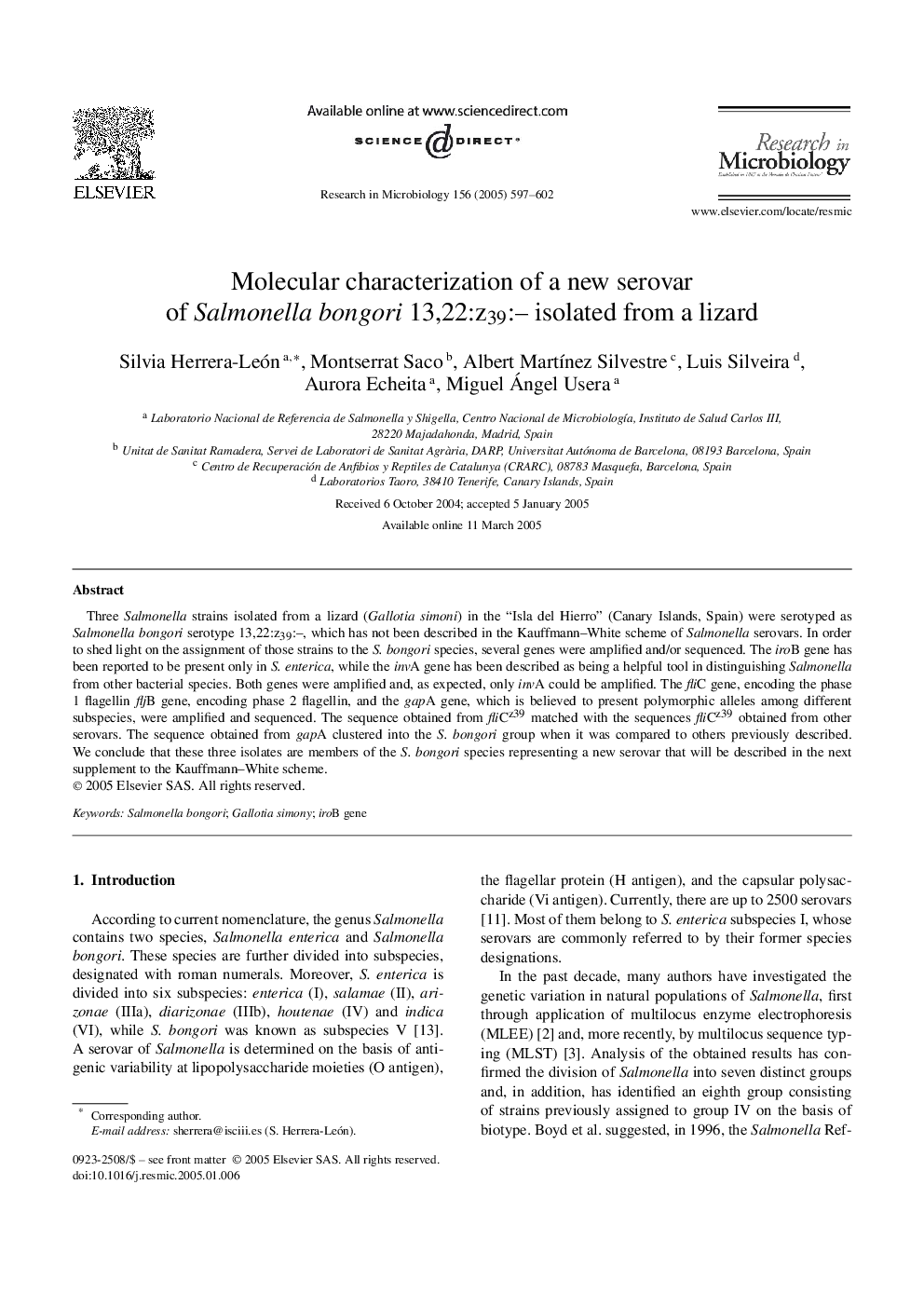| Article ID | Journal | Published Year | Pages | File Type |
|---|---|---|---|---|
| 9440157 | Research in Microbiology | 2005 | 6 Pages |
Abstract
Three Salmonella strains isolated from a lizard (Gallotia simoni) in the “Isla del Hierro” (Canary Islands, Spain) were serotyped as Salmonella bongori serotype 13,22:z39:-, which has not been described in the Kauffmann-White scheme of Salmonella serovars. In order to shed light on the assignment of those strains to the S. bongori species, several genes were amplified and/or sequenced. The iroB gene has been reported to be present only in S. enterica, while the invA gene has been described as being a helpful tool in distinguishing Salmonella from other bacterial species. Both genes were amplified and, as expected, only invA could be amplified. The fliC gene, encoding the phase 1 flagellin fljB gene, encoding phase 2 flagellin, and the gapA gene, which is believed to present polymorphic alleles among different subspecies, were amplified and sequenced. The sequence obtained from fliCz39 matched with the sequences fliCz39 obtained from other serovars. The sequence obtained from gapA clustered into the S. bongori group when it was compared to others previously described. We conclude that these three isolates are members of the S. bongori species representing a new serovar that will be described in the next supplement to the Kauffmann-White scheme.
Related Topics
Life Sciences
Immunology and Microbiology
Applied Microbiology and Biotechnology
Authors
Silvia Herrera-León, Montserrat Saco, Albert MartÃnez Silvestre, Luis Silveira, Aurora Echeita, Miguel Ángel Usera,
